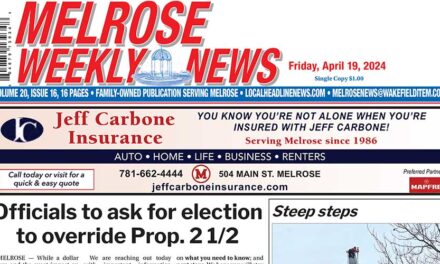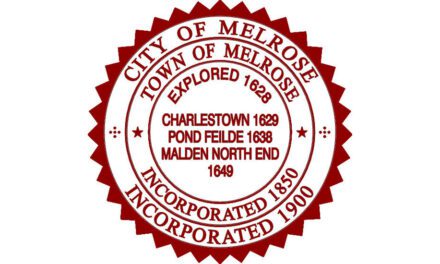Published in the January 20, 2017 edition
MELROSE — If you feel safe living in Melrose, there’s a reason for that. The city is one of the safest communities in the country. Melrose was named No. 86 in Neighborhood Scout’s ranking of the “100 Safest Cities in America” for 2017.
Nineteen other cities and towns in Massachusetts also made the list of Top 100 safest communities in the country, including one of Melrose’s neighbors: Wakefield is listed in 58th place.
The No. 1 safest community in the nation according to Neighborhood Scout’s data is Oak Ridge, TN.
Mayor Rob Dolan said, “It’s an honor to be named one of the 100 safest suburbs in America. It is clear from our own statistics that crime of all sorts in Melrose has been low and is going down even further. Making a community safe is a team effort.
“First and foremost, it’s led by an excellent Police Department. Also part of that team are community groups such as the Melrose Alliance Against Violence, the Community Coalition, the Substance Abuse Prevention Coalition, and others. Layered upon that are our public schools, which are partners in teaching our children right from wrong and how to look out for each other. It includes our houses of worship as well as neighborhood groups, both formal and informal, and neighbors watching out for neighbors. It is an affirmation of the culture of mutual respect that we hold dear, and I join with (Police) Chief (Mike) Lyle and (Fire) Chief (Chris) Leary in congratulating our staff and many partners on this accomplishment.”
Neighborhood Scout based the 100 safest cities in America with 25,000 or more people on the total number of property and violent crimes per 1,000 residents. Crimes include burglary, larceny-theft, motor vehicle theft, murder, rape, armed robbery, and aggravated assault. Data used for this research are 1) the number of total crimes reported to the FBI to have occurred in each city, and 2) the population of each city.
Thousands of cities nationwide have multiple agencies with law enforcement responsibility. These include municipal police, county sheriff, transit police, campus police, public school police, park and port police, tribal police, and more. Since many cities are served by more than one law enforcement agency, Neighborhood Scout’s exclusive analysis includes crimes reported by all agencies.
The data collectors accomplish this by gathering raw crime data from all 18,000 law enforcement agencies in America. Then they use a relational database built from the ground up to assign reported crimes from each agency to the city where it has law enforcement responsibility. This method provides an accurate representation of the complete number and types of crimes that truly occur within any city or town, not just crimes reported by a single municipal agency.
Once Neighborhood Scout has this complete and accurate count of crimes for every city in the nation, the analysis takes the total crimes for each city with 25,000 or more people, and divides them by the population of the city, divided by 1,000. This establishes a total crime rate per 1,000 population that is used to compare every city.




